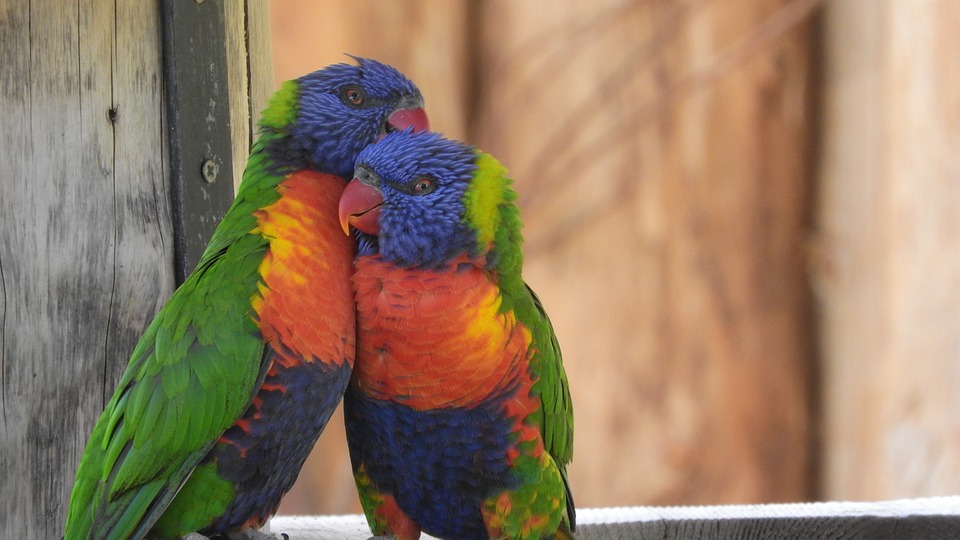Parrots are incredibly intelligent and social creatures known for their vibrant personalities. As a parrot owner, it is important to understand and recognize signs of excitement and anticipation in your feathered friend. By understanding their body language and vocalizations, you can provide them with the mental stimulation they need and strengthen your bond with them. In this article, we will explore various ways to recognize these signs and provide some useful tips for parrot training.
Recognizing Signs of Excitement in Parrots
1. Vocalizations: Parrots are known for their extensive vocal repertoire, and when they become excited, their vocalizations become more intense. They may start squawking, chirping, or making high-pitched noises. Pay attention to the frequency and intensity of these vocalizations to gauge their excitement levels.
2. Wing Flapping: Excited parrots often exhibit wing flapping, which is a natural behavior indicating their enthusiasm. They may rapidly flap their wings while perched or even take short flights within their enclosure. This is particularly common when they are anticipating something enjoyable, such as mealtime or playtime.
3. Preening: Another sign of excitement in parrots is excessive preening. When they are excited, they may engage in vigorous preening, often focusing on specific feathers or body parts. Pay attention to their body language and observe if they seem particularly focused or energetic while grooming themselves.
4. Tail Wagging: Parrots, especially larger species like macaws and cockatoos, may wag their tails from side to side when excited. This tail wagging is usually accompanied by other signs of excitement, such as vocalizations or wing flapping. It’s important to note that tail wagging can also indicate other emotions, so look for additional cues to accurately interpret their excitement levels.
Recognizing Signs of Anticipation in Parrots
1. Beak Grinding: Anticipatory beak grinding is a common behavior observed in parrots. It is characterized by the grinding or gnashing of their beaks, often producing a distinctive sound. This behavior typically happens when they are eagerly awaiting something, such as receiving a favorite treat or engaging in an enjoyable activity.
2. Head Bobbing: Parrots may bob their heads up and down or from side to side when they are anticipating something exciting. This rhythmic movement is a clear indicator of their heightened excitement and anticipation. It is commonly seen when they are about to be let out of their cage or when they are eagerly waiting for interaction with their human companions.
3. Fidgeting: When parrots are anticipating something, they may exhibit fidgety behavior such as pacing back and forth on their perch, hopping around their enclosure, or moving their feet rapidly. These restless movements are a result of their eagerness and anticipation, and they are often accompanied by other signs of excitement like vocalizations and wing flapping.
4. Dilated Pupils: Parrots may also display dilated pupils when they are excited and anticipating something. Dilated pupils indicate heightened arousal and interest, signaling their anticipation of a rewarding experience. Observe their eyes closely to determine if their pupils are larger than usual.
FAQs about Recognizing Excitement and Anticipation in Parrots
1. Q: Are all parrot species equally expressive when excited?
A: While individual personalities vary, most parrot species exhibit similar signs of excitement and anticipation. However, larger parrot species tend to be more visually expressive with their body language, vocalizations, and wing movements.
2. Q: Can parrots become overly excited or anxious?
A: Yes, parrots can become overly excited or anxious, especially if they are exposed to excessive stimuli or lack appropriate mental and physical enrichment. It is important to provide a balanced and stimulating environment to avoid overwhelming or stressing your parrot.
3. Q: How can I use signs of excitement and anticipation to enhance parrot training?
A: By recognizing these signs, you can incorporate them into your training sessions. For example, reward your parrot when they display signs of anticipation or excitement for a specific command or behavior. This positive reinforcement strengthens the association between the behavior and the reward.
4. Q: Are there any signs I should be concerned about when it comes to excitement or anticipation in parrots?
A: While excitement and anticipation are normal emotions in parrots, pay attention to any sudden or extreme changes in their behavior. If you notice persistent signs of stress, fear, or aggression, it is essential to consult with an avian veterinarian or an experienced parrot behaviorist for guidance.
Understanding and recognizing signs of excitement and anticipation in parrots is crucial for their well-being and effective training. By observing their body language, vocalizations, and overall behavior, you can ensure a rewarding and enriching experience for both you and your feathered companion.









